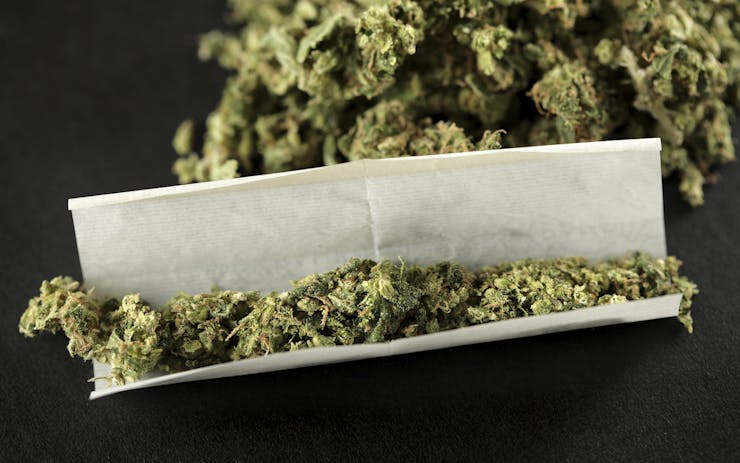While humans have been consuming cannabis for thousands of years, it has historically been smoked through a pipe, hookah, or chillum. A relatively new innovation, the humble marijuana cigarette has managed to find its way into the heart of countless cultures around the world. Here’s a brief overview of its rise to fame.
When Was the First Joint Consumed Recreationally?
The first recorded use of a joint was in Mexico. Though cannabis had been used as a medicine for a long time, it seems that the joint was first used for recreational purposes. It was a pharmacist at University of Guadalajara who first mentioned that laborers were mixing cannabis with tobacco in their cigarettes. Though it probably started much earlier, the practice had begun by at least 1856.
You don’t have to look far to spot the cultural ties that still linger from cannabis’s Mexican roots. In fact, the word “roach” got its name from the Mexican song “La Cucaracha,” which tells the story of a cockroach who can’t get up because he has no marijuana to smoke.
The earliest record of a commercial cannabis cigarette can be found in an 1870 publication of The Boston Medical and Surgical Journal. Grimault’s Indian Cigarettes- marketed as a treatment for respiratory ailments- was a powerful mixture of cannabis resin, belladonna leaves (also known as deadly nightshade, a powerful and sometimes deadly muscle relaxant), and a small amount of potassium nitrate. This combination would have acted to deconstrict the bronchial tubes in the event of an asthma attack, allowing the patient to increase oxygen flow to the lungs.

1907 advertisement for Grimault’s Indian Cigarettes. Marketed 10 years before the advent of the cigarette rolling machine, each joint had to be individually hand-rolled.
Joints in the Early 20th Century
Spurred on by the precursor of Marcus Garvey’s Rastafarian movement, cannabis gained a more widespread popularity throughout black communities. Jazz musicians especially preferred cannabis to alcohol, as it enhanced creativity without affecting their motor control.
Many nicknames for the cannabis cigarettes were birthed in the 20s and 30s, some of which are still used to this day. The words “reefer” and “joint” originated in this era. As did the term “muggle,” since popularized by the Harry Potter franchise. Some words haven’t stood the test of time so well. Ever heard of a killer, goof butt, or joy smoke?
The prohibition of alcohol in 1920 had a big hand in cannabis’s widespread usage. Speakeasies were springing up around the country, providing an illegal underground hub where patrons could sip on the finest bathtub whiskey and listen to jazz. New Orleans musicians began touring over the country, bringing with them their iconic “jazz cigarettes.” Popularity for the drug boomed – its legal status in most states meant that a Viper (the term for cannabis smoker) could roll a reefer in public and face no repercussions.
After a series of increased restrictions and “Reefer Madness” style propaganda, the Marihuana Tax Act of 1937 was passed federally, essentially outlawing the possession and sale of the plant. Joints were especially targeted in the media, with newspapers and even school textbooks from this era claiming that harmless cigarettes were being spiked with cannabis in order to drug children and drive them insane.
Popularity of “Marijuana Cigarettes” Skyrockets
The 1960’s represented a major shift in people’s attitudes towards authority. The conflict in Vietnam was gaining a reputation as an unjust war, and adults who had been raised to believe “Reefer Madness” propaganda realized they had been deceived. Cannabis was not a plant which drove people to homicidal madness, nor would it make a person see demons or become a sex-crazed maniac. Smoking a joint represented an act of non-violent protest against a broken system, and brought people together under the banner of peace, love, and a counter-cultural revolution.
Hippies were quick to develop their own fashion trends, with many accessories being targeted specifically to stoners. Jewelry and belt buckles were manufactured to include disguised roach clips, allowing the average toker to always be prepared for a surprise spliff, and giving a nod to those in the know.
Rolling paper manufacturers were quick to cash in on this new market too. Companies created wider styles of papers to accommodate the stoner market, who traditionally rolled much thicker cigarettes than tobacco users. Packets of rolling paper were decorated with psychedelic patterns and pro-marijuana quotes. A company called Randy’s even invented the Insta-Roach wired rolling papers, which gave users a stainless steel wire to hold on to as they finished off the last of their joint.

Cannabis became popular in some pretty unlikely places. Soldiers in Vietnam smoked pot in previously unheard of quantities, with some commanders asserting that 70%-80% of their troops had tried it. Marijuana usage was an open secret in many bases, with some officers even allowing under-the-counter sales of joints on PX facilities. For just two dollars, a soldier could buy a packet of real cigarettes that had been emptied out and filled with cannabis. Many even had the original cellophane seal reapplied. Discreet and unassuming, these disguised doobies became especially useful when the military decided to search your quarters.
Modern Day Joints
Today’s discerning cannabis connoisseurs can customize their rolling experience to a degree that’s never been seen before. Consumers can choose from a huge selection of strains, treat themselves to special papers, and even purchase power-packed pre-rolls.
Thanks to the internet, we’re also starting to see some incredible art emerge from professional joint rollers. Check out Tony Greenhand, currently the biggest pro roller in the scene.
Simple, convenient, and a time-honored tradition, it’s easy to appreciate a joint. So get out there and roll yourself a nice goof butt, Viper!





